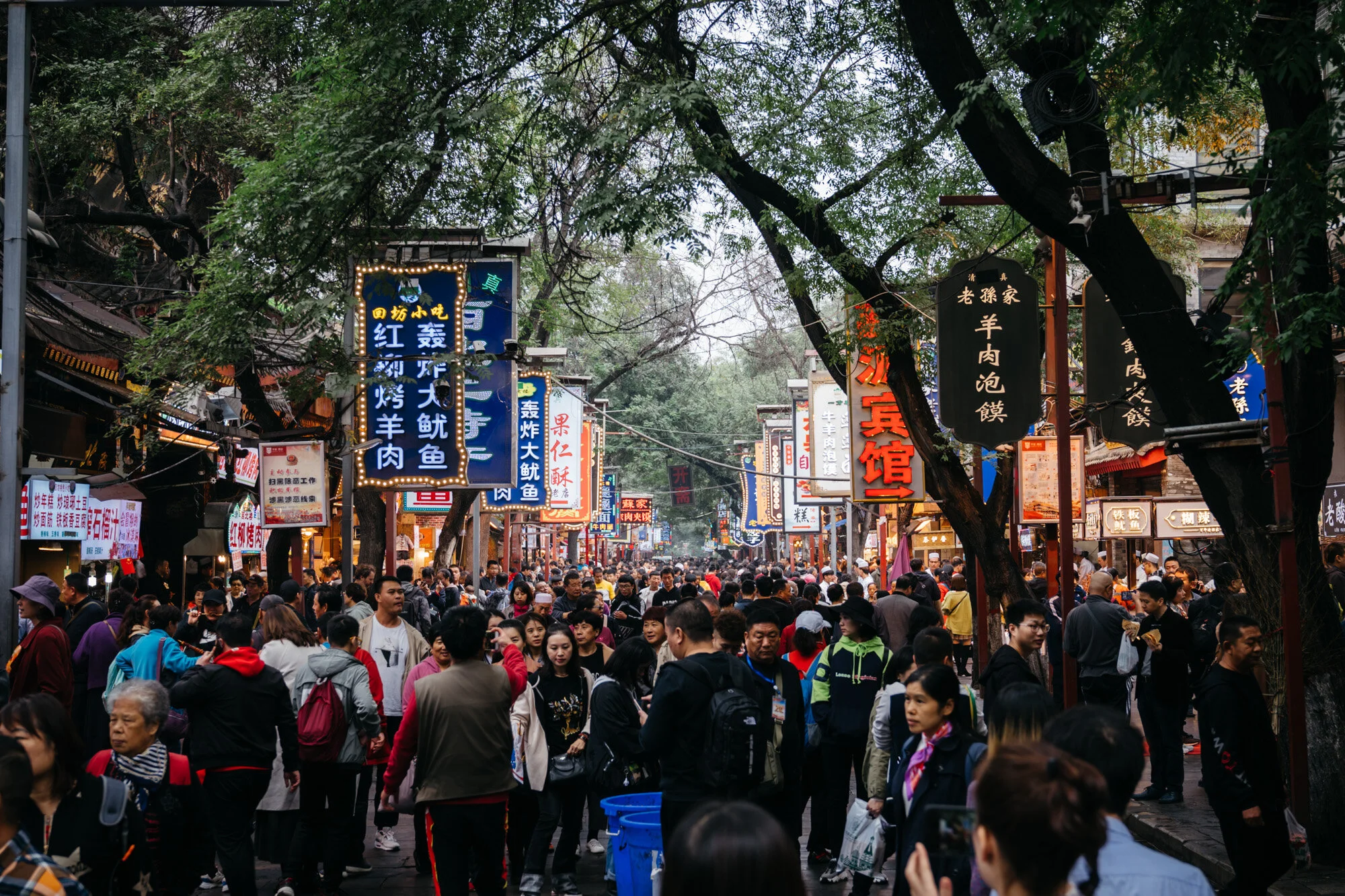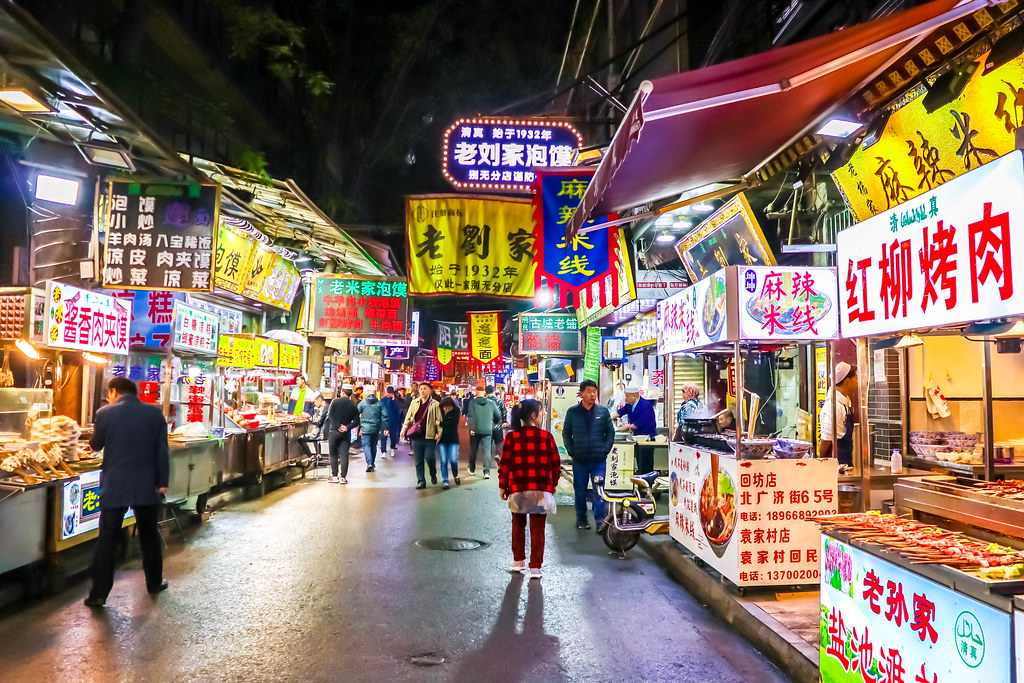Navigating Xi’an’s Muslim Quarter and Historical Diversity

Welcome to the enchanting world of Xi’an’s Muslim Quarter, a dynamic hub that beautifully captures the essence of Xi’an cultural heritage and showcases China’s rich historical diversity. As a traveler eager to explore cultural attractions in Xi’an, you’ll find this neighborhood a perfect blend of ancient traditions and lively modern vibes. Here, the echoes of the Silk Road come alive through bustling markets, historic mosques, and flavorful street food, making it an essential stop on any Xi’an travel guide. At Jusha Travel, we’re passionate about uncovering these hidden gems to help you craft unforgettable journeys through China’s fascinating history and culture. Whether you’re a first-time visitor or a seasoned explorer, this guide will navigate you through the quarter’s wonders, inspiring you to dive deeper into China history travel. https://jusha.travel/how-to-explore-chinas-silk-road-in-one-unforgettable-trip/
Historical Timeline: From Silk Road Traders to Modern Marvel

Delving into the history of the Xi’an Muslim Quarter reveals a captivating story of cultural fusion that has shaped China historical diversity for centuries. This area, known as Huimin Jie, traces its roots back to the Tang Dynasty (618–907 AD), when Muslim merchants from Central Asia and the Middle East arrived via the Silk Road. These traders settled in what was then Chang’an, establishing a thriving community that flourished under imperial support for trade and exchange. According to reliable sources like Wikipedia’s page on Xi’an Muslim Quarter, this period marked the beginning of a lasting Islamic presence in China. https://jusha.travel/why-xians-terracotta-warriors-are-worth-the-hype/
As we move through the timeline, the Song and Yuan dynasties saw the quarter expand, with key landmarks like the Great Mosque of Xi’an emerging as symbols of Xi’an cultural heritage. By the Ming and Qing eras, the neighborhood had become a commercial powerhouse, featuring a layout of “Three Mosques and Thirteen Blocks” that evolved into the “Nine Mosques” by the early 20th century. Even during turbulent times, such as the Cultural Revolution, the area’s resilience shone through, with religious life reviving in modern times. Today, it stands as a testament to China history travel, where visitors can witness the “Twelve Mosques” and feel the pulse of a community that has adapted while preserving its roots.
https://jusha.travel/historical-places-in-china-a-comprehensive-guide-to-ancient-sites-and-cultural-landmarks/
Cultural and Culinary Delights: A Sensory Journey Through Heritage

One of the most exhilarating aspects of visiting the Xi’an Muslim Quarter is immersing yourself in its vibrant cultural and culinary tapestry, which exemplifies Xi’an cultural heritage at its finest. At the heart of this lies the Hui Muslim community, descendants of those ancient Silk Road traders, who have maintained a unique blend of Islamic and Chinese traditions. Architectural marvels like the Great Mosque stand out as prime cultural attractions in Xi’an, seamlessly merging Chinese pagoda-style roofs with Islamic minarets and courtyards. As noted in East China Trip’s Xi’an Muslim Quarter guide, this fusion reflects broader China historical diversity, where religions and customs have intertwined over centuries. https://jusha.travel/best-places-to-visit-in-china-discover-iconic-landmarks-and-hidden-gems/
But it’s the culinary scene that truly steals the show, turning a simple walk into a feast for the senses. The quarter’s narrow alleys are alive with the aromas of spices and sizzling grills, offering dishes that are deeply rooted in halal traditions. Must-try delights include yangrou paomo—a hearty bread and mutton soup—and spiced lamb skewers, grilled to perfection with cumin and chili. For a deeper dive, check out Travels with Elle’s insights on Xi’an street food, which emphasizes how these flavors tell stories of China history travel. Whether you’re savoring hand-pulled noodles or sweet honey rice cakes, this experience not only satisfies your taste buds but also connects you to the everyday life of the Hui people. It’s moments like these that make the Xi’an travel guide essential for anyone curious about China’s multicultural fabric. https://jusha.travel/how-to-plan-a-budget-friendly-trip-across-chinas-top-cities/
Navigating Key Sites and Practical Tips: Your Essential Explorer’s Toolkit

To make the most of your adventure in the Xi’an Muslim Quarter, it’s crucial to know how to navigate its maze-like streets while respecting its rich historical diversity. Start at the iconic Drum and Bell Towers, which serve as gateways to the quarter and are among the top cultural attractions in Xi’an. From there, wander through central thoroughfares like Beiyuanmen, where you’ll find the Great Mosque and the Gao Family Mansion, offering glimpses into centuries of Xi’an cultural heritage. These sites, as detailed in Wild Great Wall’s guide, are easily accessible on foot, making them ideal for immersive China history travel.
Practical tips can enhance your visit while ensuring it’s culturally sensitive. Dress modestly when entering mosques, and always ask for permission before taking photos, especially during prayer times—a nod to the respectful etiquette highlighted in Christopher Wilton-Steer’s photography story. Markets are busiest in the evenings, perfect for bargaining over souvenirs, but stay vigilant with your belongings in crowds. For families or solo travelers, opting for a local guide can provide deeper insights, turning your exploration into a personalized Xi’an travel guide. Remember, visiting responsibly means supporting local vendors and appreciating the quarter’s role in preserving China historical diversity, ensuring its legacy endures for future generations.
In conclusion, the Xi’an Muslim Quarter offers an unparalleled glimpse into Xi’an cultural heritage and China historical diversity, blending ancient history with vibrant daily life to create memories that last a lifetime. From the historical timelines that trace Silk Road influences to the culinary delights that tantalize your palate, this destination is a cornerstone of any China history travel itinerary and a highlight in our Xi’an travel guide. At Jusha Travel, we love sharing tips like these to make your China journey unforgettable, so whether you’re planning your next trip or reflecting on past adventures, we encourage you to share your thoughts in the comments below. Visit jusha.travel for more inspiring stories and guides, or explore related articles to dive deeper into China’s wonders—your next cultural discovery awaits!

